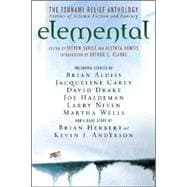
Note: Supplemental materials are not guaranteed with Rental or Used book purchases.
Purchase Benefits
What is included with this book?
| Acknowledgments | 9 | (2) | |||
| Introduction: Once and Future Tsunamis | |||||
|
11 | (8) | |||
| Report from the Near Future: Crystallization | |||||
|
19 | (17) | |||
| And Tomorrow and | |||||
|
36 | (14) | |||
| Abductio ad Absurdum | |||||
|
50 | (8) | |||
| In the Matter of Fallen Angels | |||||
|
58 | (14) | |||
| Tiger in the Night | |||||
|
72 | (4) | |||
| The strange case of Jared Spoon, who went to pieces for love. | |||||
|
76 | (12) | |||
| The Solipsist at Dinner | |||||
|
88 | (4) | |||
| The Wager | |||||
|
92 | (10) | |||
| Expedition, with Recipes | |||||
|
102 | (6) | |||
| Tough Love 3001 | |||||
|
108 | (11) | |||
| Chanting the Violet Dog Down: A Tale of Noreela | |||||
|
119 | (18) | |||
| Butterflies Like Jewels | |||||
|
137 | (19) | |||
| Perfection | |||||
|
156 | (13) | |||
| The Compound | |||||
|
169 | (15) | |||
| Sea Child: A Tale of Dune | |||||
|
184 | (16) | |||
| Moebius Trip | |||||
|
200 | (12) | |||
| The Run to Hardscrabble Station | |||||
|
212 | (22) | |||
| The Last Mortal Man | |||||
|
234 | (14) | |||
| The Double-Edged Sword | |||||
|
248 | (29) | |||
| Night of the Dolls | |||||
|
277 | (9) | |||
| The Potter's Daughter | |||||
|
286 | (22) | |||
| The Day of Glory | |||||
|
308 | (30) | |||
| Sea Air | |||||
|
338 | (39) | |||
| Afterword: Why Elemental? | |||||
|
377 |
The New copy of this book will include any supplemental materials advertised. Please check the title of the book to determine if it should include any access cards, study guides, lab manuals, CDs, etc.
The Used, Rental and eBook copies of this book are not guaranteed to include any supplemental materials. Typically, only the book itself is included. This is true even if the title states it includes any access cards, study guides, lab manuals, CDs, etc.